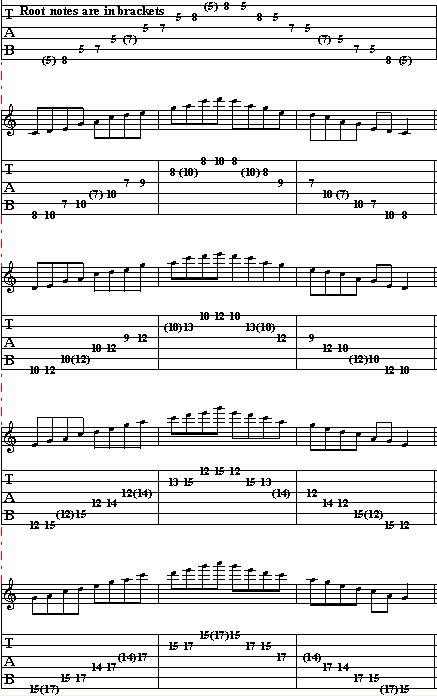Hey there bass fans, Darrin Goodman here with a bass guitar scale lesson for you. If you are a student of the bass guitar you are going to want to learn some scales. Interesting bass lines are composed from the notes of the scale of whatever key the song happens to be in. Although there are many different musical scales you can learn for the bass guitar, the first one I recommend learning is the major scale.
The major scale is a diatonic musical scale made up of 7 tones; root note, a major second, a major third, a perfect fourth, a perfect fifth, a major sixth, and a major seventh. The major scale is also none as the Ionian Mode. The eighth duplicates the first at double its frequency so that it is called a higher octave of the same note, which its name is derived from Latin “octavus“, the eighth.
There are numerous different patterns of the major scale that you can play, but I personally believe this pattern is the easiest for the bass guitar, especially for the beginner.
This example is written in the key of “G major” and can be easily transposed to another key by simply starting on a different fret. For example if you wanted to play in the key of “F Major” you would just simply start on the first fret, F, instead of the third fret as shown on the tabs.
Since you will not always be playing in a major key you should also learn the natural minor scale aka Aeolian Mode. The natural minor scale consists of; root note, a major second, a minor third, a perfect fourth, a perfect fifth, a minor sixth, and a minor seventh.
Just like the major scale pattern you can transpose the minor scale into other keys by simply moving it around the Fretboard.
Ideally you are going to want to learn all seven of the Major Modes as well as the pentatonic scales. But by learning the two examples I gave you will be able to come up with good interesting bass lines.
Cheers!
Darrin

